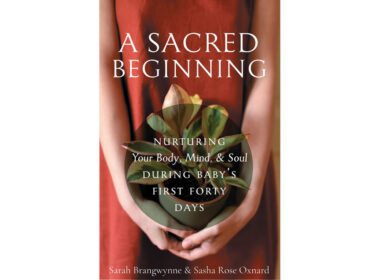I’ve previously written about how long to wait to conceive after giving birth for optimal health for mom and baby, but what about conceiving after miscarriage? Jill (Duggar) Dillard, formerly of TLC’s 19 Kids and Counting, gave birth to a son in July of 2022, right about a year after miscarrying, according to Us Weekly. Actress Nicole Kidman conceived her daughter Faith, now 12, multiple years after suffering several miscarriages. While each woman will clearly take her own time to feel ready to try for pregnancy again after a miscarriage, a Natural Womanhood reader recently asked us if there is an ideal time frame to wait to conceive after pregnancy loss—and, if so, what is it? Here’s what prominent American medical organizations recommend, as well as reasons to wait to conceive… and reasons not to!
What do medical organizations recommend?
There is a wide range of recommendations out there on how long to wait after a miscarriage before trying to conceive. The longest recommendation, offered by the World Health Organization (WHO), is a six-month waiting period, although, like the WHO recommendation on how long to wait between births, this recommendation has been critiqued for its lack of supporting evidence [1]. Other organizations, including Mayo Clinic and the American College of Obstetricians and Gynecologists (ACOG), say there is no need to wait but add that it could be helpful to wait one cycle to allow human chorionic gonadotropin (hCG) levels to return to zero and avoid the potential confusion of a false-positive pregnancy test. ACOG also notes that waiting one cycle is important for calculating your due date. Still, charting after your miscarriage may allow you to know when you ovulated, so you can date a pregnancy without relying on the start of your last menstrual period.
Reasons to wait to conceive after miscarriage
Pelvic rest during the physical recovery period
Normally, the physical recovery time after an early first-trimester miscarriage, which involves pelvic rest or abstaining from sex just like during the initial postpartum time period after a live birth, is only 1-2 weeks [2]. However, the recovery time may be longer depending on the type of miscarriage management the woman had, such as with dilation and curettage (D&C). While some doctors may not offer a specific waiting time, a common recommendation seems to be waiting three cycles to give the uterine lining time to “rebuild” after a D&C [3]. If you have had a D&C, ask your doctor if they recommend a specific waiting period at your follow-up appointment.
Taking time to chart cycles or receive treatment(s) to prevent future miscarriages
Another situation where waiting to conceive might be beneficial could be to give time to identify and potentially correct the cause of the miscarriage. Unfortunately, miscarriage is fairly common and while there are risk factors that could make a miscarriage more likely, it’s not always possible to know why one occurred. Certain lifestyle changes, like quitting smoking or achieving a healthy weight if you’re overweight or obese, can lower miscarriage risk, and each of these takes time.
But especially if this is not your first miscarriage, there may be an underlying medical condition at play such as a blood clotting disorder, autoimmune disorder, or hormone issue such as progesterone insufficiency. If you have not already been charting your cycles, it could be beneficial to chart at least three cycles with your provider to identify a potential problem and put together a treatment plan. Waiting to conceive while working with a physician to identify a potential root cause could be a necessary step towards having a healthy pregnancy in the future.
If you are already working with a NaPro doctor or other healthcare provider who practices restorative reproductive management (RRM), ask what their recommended waiting period is for your specific circumstances. Certain treatment options intended to decrease the likelihood of future miscarriage, such as supplementing progesterone levels, may require several months and multiple cycles to take effect.
Emotional and mental healing
Just as important as physical healing is your mental and emotional healing. Child loss at any stage can be a painful and difficult experience, and common feelings after a miscarriage include grief, depression, disbelief, anxiety over the outcome of future pregnancies, shame, and guilt. It’s normal to wonder why the miscarriage occurred and to worry that something could have been done to prevent it. The trauma of pregnancy loss can be made more difficult when met with uncompassionate medical personnel, a lack of a support system, an experience of stigma around miscarriage, and/or the feeling that it is a taboo topic and something that has to be kept secret. Finding a trusted friend or counselor to talk to, checking out online resources like Catholic Miscarriage Support, Red Bird Ministries (also Catholic) or Share (recommended by ACOG), and giving yourself plenty of time and self-care can all be beneficial in the healing process.
Benefits of not waiting to conceive after miscarriage
For couples who are ready to try to conceive again, or who discover they are expecting again shortly after as miscarriage, some evidence suggests that conceiving again less than six months after a miscarriage may actually be of some benefit.
In a 2017 study of about 500 women who reported having a recent miscarriage, the group with the lowest repeat-miscarriage rate (7.3%) conceived three months or less after miscarriage, whereas the rate was three times higher (22%) rate amongst women who waited 6-18 months between miscarriage and conception [1].
A 2017 review of literature that included over a million women found that women who conceived within six months of a miscarriage had a risk ratio or relative risk of 0.82 for repeat miscarriage, meaning 18% lower odds for experiencing miscarriage than women who waited longer than six months later [2].
And a 2014 study of approximately one thousand women which studied the effect of low-dose aspirin on pregnancy outcomes incidentally observed that women who started trying to conceive within three months of their miscarriage became pregnant sooner and had a lower miscarriage rate than women who waited longer than three months [3].
Waiting to conceive after miscarriage doesn’t raise your risk of adverse pregnancy outcomes
Of course, the above information is meant to be encouraging for couples who are hoping to conceive again quickly, not to add stress to couples who are not ready, either mentally, emotionally, or physically, to conceive again right away. While these studies suggest that a short amount of time between pregnancies offers some benefit as the body is already “primed” for pregnancy by the hormonal and physiological changes that began before the miscarriage occurred, waiting for a longer period of time does not increase the risk of a bad outcome.
As a 2022 study reviewing pregnancy outcomes in Norway concluded,
“There was no evidence of higher risks of adverse pregnancy outcomes among women with an IPI [inter pregnancy interval, or the time between the end of one pregnancy and the start of another] of greater than 12 months after miscarriages or induced abortions, with the exception of a modest increased risk of gestational diabetes mellitus” [4].
In other words, don’t stress if you need more time (but maybe watch your sugar consumption)! Focus first on healing.
Moving forward
Every woman has a unique story, and the way the next chapter of your life unfolds after a miscarriage won’t look quite like anyone else’s. This may have been your first miscarriage or your fifth, an unexpected pregnancy or a long-hoped-for conception. You may feel devastated and heartbroken, some relief, or you may not know how you feel. You may be ready to welcome a new life or you may feel terrified at the thought of going through this experience again. You may feel all of these things at the same time! Wherever your feelings lie, and whether you choose to take advantage of the research suggesting some protective benefit for your next pregnancy with an IPI of six months or less, or to take longer to heal or otherwise prepare for future conception, know that you are not alone.
References:
[1] Sundermann AC, Hartmann KE, Jones SH, Torstenson ES, Velez Edwards DR. Interpregnancy Interval After Pregnancy Loss and Risk of Repeat Miscarriage. Obstet Gynecol. 2017 Dec;130(6):1312-1318. doi: 10.1097/AOG.0000000000002318. PMID: 29112656; PMCID: PMC5709156. [2] Kangatharan, Chrishny et al. “Interpregnancy interval following miscarriage and adverse pregnancy outcomes: systematic review and meta-analysis.” Human reproduction update vol. 23,2 (2017): 221-231. doi:10.1093/humupd/dmw043 [3] Schisterman, Enrique F et al. “Preconception low-dose aspirin and pregnancy outcomes: results from the EAGeR randomised trial.” Lancet (London, England) vol. 384,9937 (2014): 29-36. doi:10.1016/S0140-6736(14)60157-4 [4] Tessema, Gizachew A et al. “Interpregnancy interval and adverse pregnancy outcomes among pregnancies following miscarriages or induced abortions in Norway (2008-2016): A cohort study.” PLoS medicine vol. 19,11 e1004129. 22 Nov. 2022, doi:10.1371/journal.pmed.1004129Additional Reading:
How to chart your cycle and figure out when you will ovulate after a miscarriage
Progesterone helps prevent miscarriage: good news for moms and babies
Healing after the loneliness and heartbreak of a miscarriage








Thank you for this article. I’ve had two miscarriages and I wish someone had told me that the first couple cycles after extended breastfeeding (breastfeeding beyond one year) can have insufficient progesterone levels to support a pregnancy. That might have saved me from the pain of having miscarriages.